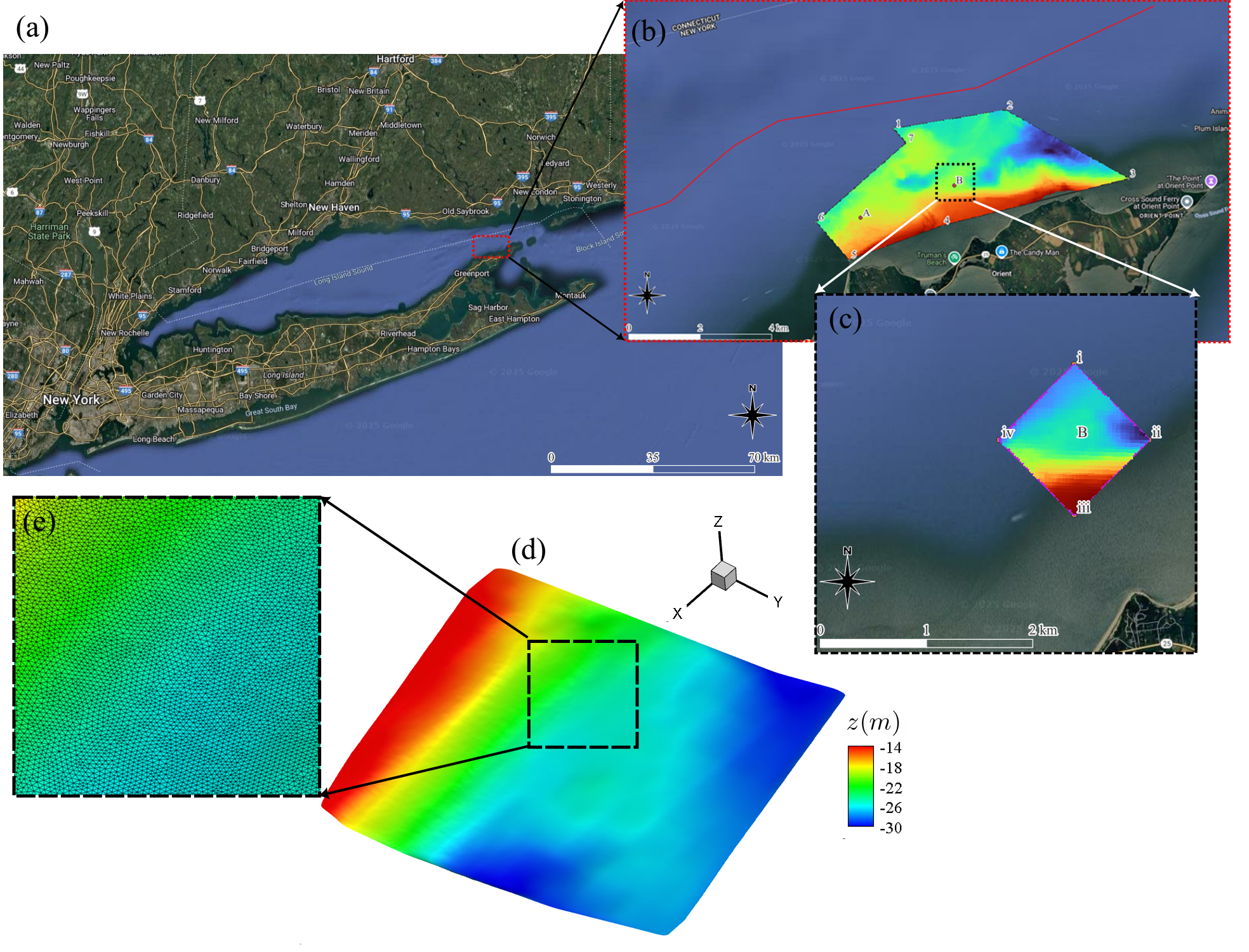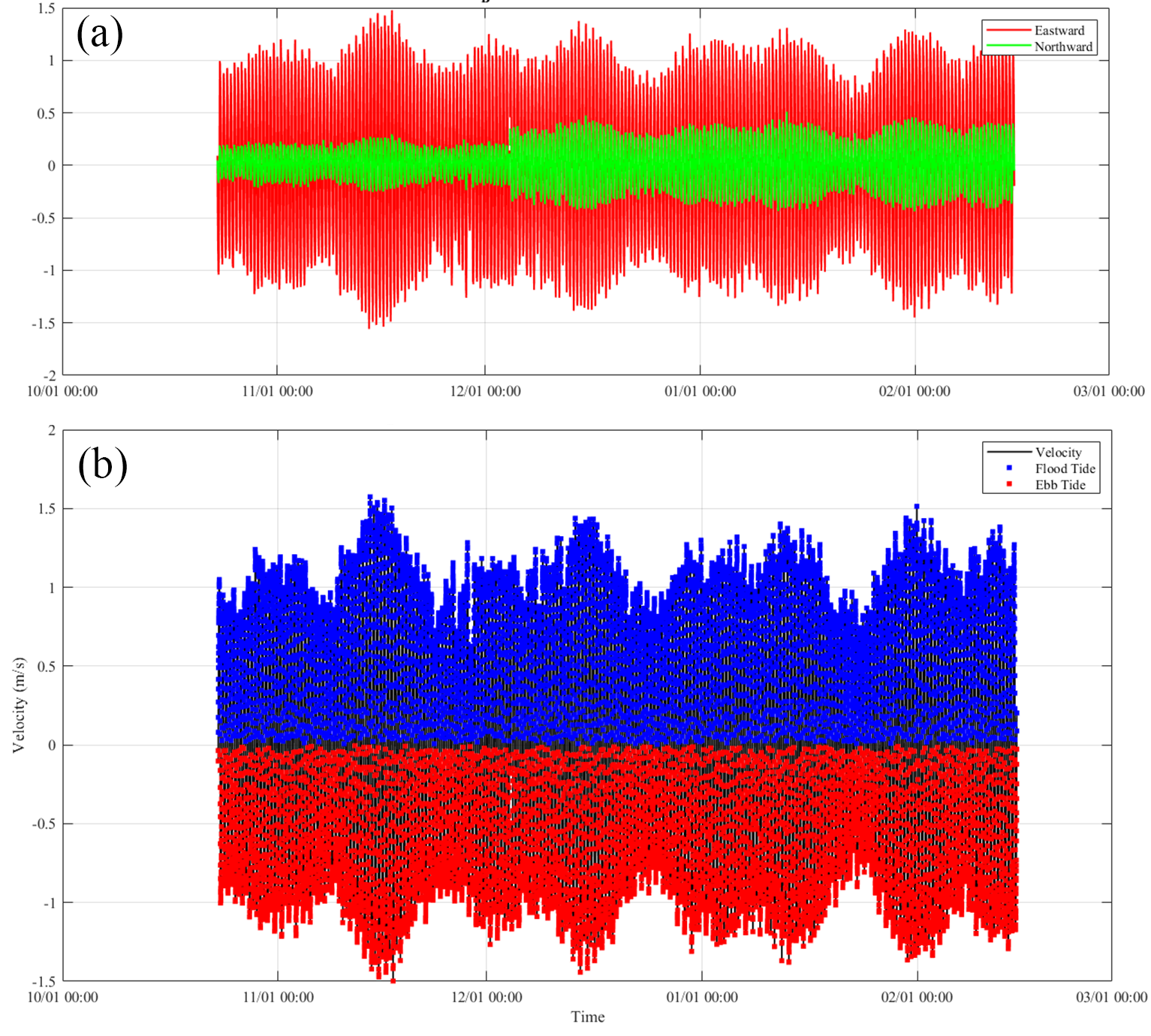Digital Twining of Marine Energy using CFD
Digital Twin Development for Marine Energy Systems

Background
- Project: High-fidelity digital twin development for marine energy site in Long Island Sound
- Digital twins provide real-time virtual representations of physical marine energy systems, enabling predictive maintenance, performance optimization, and operational decision support.
- Key physics concepts: computational fluid dynamics, real-time data integration, feasibility analysis, environmental monitoring, and predictive analytics.
Issues
- Integration of high-fidelity CFD simulations with real-time sensor data from marine energy devices.
- Development of computationally efficient models that can run in near real-time for operational support.
- Coupling of environmental conditions (waves, currents, weather) with turbine performance predictions.
- Validation of digital twin predictions against actual field measurements and performance data.
- Implementation of predictive maintenance algorithms based on digital twin insights.
Contributions to the project
- Development of high-fidelity CFD models of Long Island Sound marine energy site conditions.
- Extract latest bathymetric data using National Oceanic and Atmospheric Administration (NOAA), ensuring highest resolution for accurate site representation.
- Integration of environmental sensor data (ADCP, meteorological stations) with CFD simulations.
- Validation studies comparing digital twin predictions with field measurements from Long Island Sound.

Developement of high-resolution bathymetry mesh using SONAR data from NOAA, mesh generated for immersed boundary method (IBM).

Time series field velocity data visualization, identifying ebb and flood tidal cycles.

Depth averaged data analysis on the updated field data (ADCP) in order to find directions and velocity magnitudes.

Inlet boundary condition for the CFD model, generated using updated field data (ADCP), fitted by 3 different methods.
Technical environment
- Computing: High-performance computing clusters with parallel processing
- Programming: Python, C/C++, MATLAB, Bash
- Data & GIS: QGIS, Cloud Compare
- CFD Software: VFS Geophysics
- Meshing: Fidelity Pointwise, MeshLab, Cloud Compare, Blender
- Visualization: ParaView, Tecplot, MATLAB, Photoshop, Blender, InkSkape
- Data Analysis: Python scientific libraries, MATLAB
This research advances the development of intelligent marine energy systems through digital twin technology, enabling optimized operations and predictive maintenance for sustainable ocean energy harvesting.
